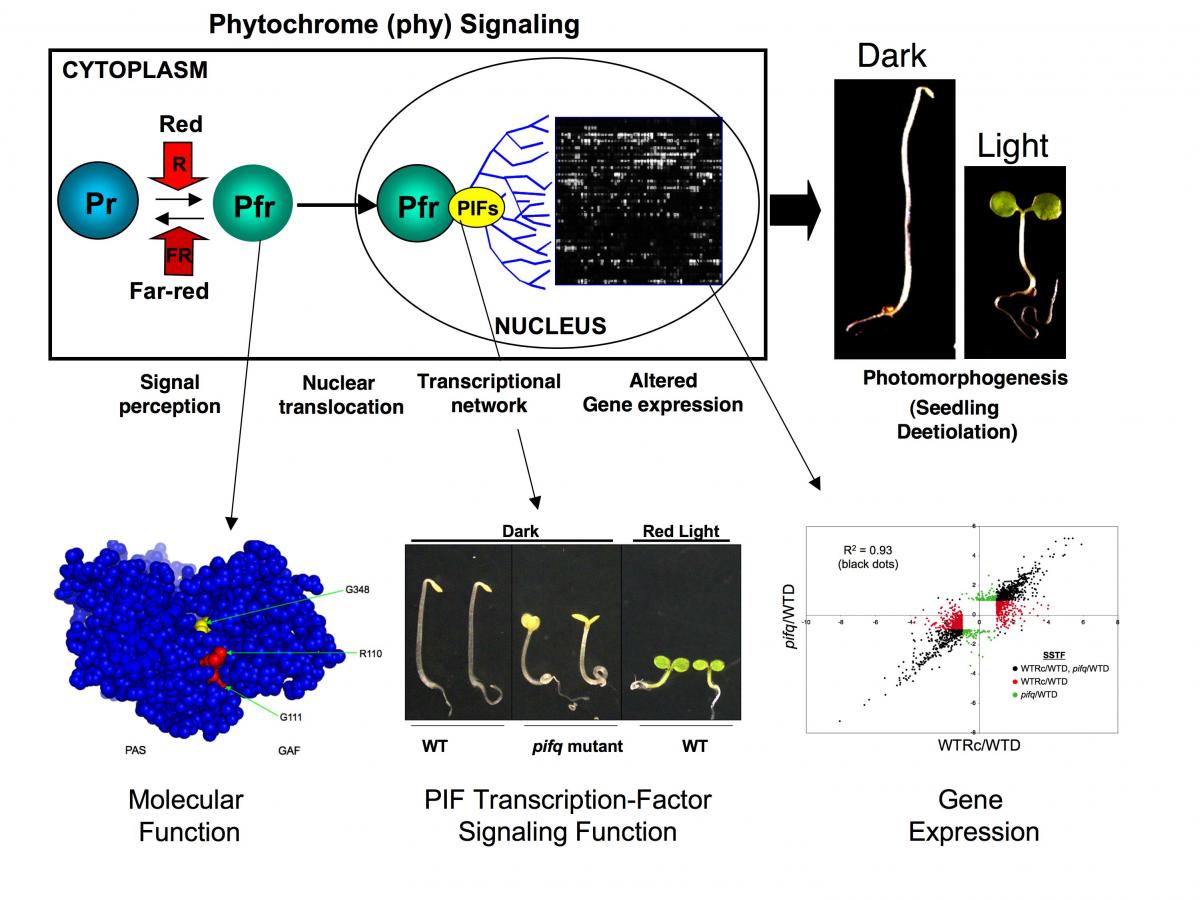University of California, Berkeley | Plant & Microbial Biology
Quail Lab Research
Plants continuously monitor and respond developmentally to informational light signals from the environment.
What are the molecular mechanisms involved in the perception, interpretation and transduction of those signals?
We are interested in understanding the molecular mechanism by which light regulates gene expression in plants. Our research program is focused on the phytochromes (phys), the red/far-red light-absorbing family of plant regulatory photoreceptors. The photoreceptor molecule functions as a biological switch that, upon perception of the light signal, triggers changes in transcription which are detectable within 5 minutes of the stimulus.

The general strategy we have adopted toward this problem is fourfold:
- 1) To examine the phytochrome molecule for clues to its photosensory function and mechanism of action using structural analysis, phytochrome-defective mutants and overexpression of mutagenized phytochromes in transgenic Arabidopsis.
- 2) To study genes under phytochrome control to identify promoter DNA elements and transcription factors involved in induction or repression of expression.
- 3) To identify signal transduction pathway components between the photoreceptor and the genes it regulates using genetic and molecular approaches.
- 4) To dissect the primary transcriptional networks which orchestrate the expression of downstream genes responsible for elaborating light-regulated development, using microarray- and RNA-seq-based genome-wide expression profiling.
Our data indicate that the phytochromes signal directly to photoresponsive genes by light-induced translocation from the cytoplasm into the nucleus, followed by specific physical interaction with promoter-bound transcription factors of the basic helix-loop-helix (bHLH) class, called Phytochrome-Interacting Factors (PIFs). Data also indicate that genes encoding a master set of diverse transcriptional regulators, which orchestrate downstream expression in the transcriptional network, are direct targets of this signaling pathway.
Using Arabidopsis seedlings mutated in multiple PIFs (pifq), we have demonstrated that the PIFs promote skotomorphogenesis/repress photomorphogenesis in darkness. In addition, we have shown that light-induced activation of the phytochrome molecule induces intranuclear phosphorylation of the PIF3 and PIF5 transcription factors preceding their proteasome-mediated degradation. These data indicate that phy-induced phosphorylation of target proteins may represent the primary intermolecular signaling transaction of the activated photoreceptor. The resultant proteolysis of the PIFs triggers the transition from skotomorphogenic to photomorphogenic development (deetiolation), upon initial exposure of seedlings to light, by directly altering the expression of PIF-target genes.
